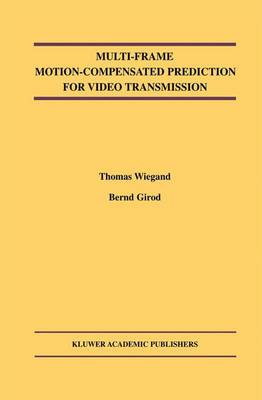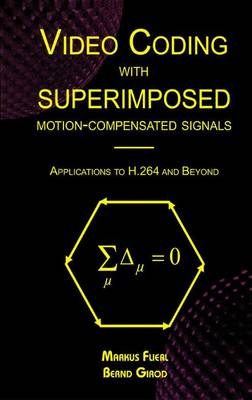The Springer International Series in Engineering and Computer Science
3 primary works
Book 636
Multi-Frame Motion-Compensated Prediction for Video Transmission
by Thomas Wiegand and Bernd Girod
Published 30 September 2001
Multi-Frame Motion-Compensated Prediction for Video Transmission presents a comprehensive description of a new technique in video coding and transmission. The work presented in the book has had a very strong impact on video coding standards and will be of interest to practicing engineers and researchers as well as academics.
The multi-frame technique and the Lagrangian coder control have been adopted by the ITU-T as an integral part of the well known H.263 standard and are were adopted in the ongoing H.26L project of the ITU-T Video Coding Experts Group.
This work will interest researchers and students in the field of video coding and transmission. Moreover, engineers in the field will also be interested since an integral part of the well known H.263 standard is based on the presented material.
The multi-frame technique and the Lagrangian coder control have been adopted by the ITU-T as an integral part of the well known H.263 standard and are were adopted in the ongoing H.26L project of the ITU-T Video Coding Experts Group.
This work will interest researchers and students in the field of video coding and transmission. Moreover, engineers in the field will also be interested since an integral part of the well known H.263 standard is based on the presented material.
Book 685
This book deals with digital watermarking, which is defined by the authors of this book as the art of hiding auxiliary information in digital data in a secure, robust and imperceptible fashion. Digital watermarking as a topic has a long history, but before 1995 publications in scientific literature were almost absent. From 1995 onwards however the number of publications on watermarking has been steadily increasing. Today a number of workshops and conferences on this topic exist; also a number of scientific journals on watermarking have been published. This renewed scientific interest in digital watermarking has led very quickly to industrial interest, as well. In 1996 the Copy Protection Technical Working Group, a voluntary consortium consisting of the movie industry, the IT industry and the consumer electronics industry, issued a call for watermarking technologies for the purpose of copy protection of DVD-Video. A few years later the Secure Digital Music Initiative issued a similar call, in this case focusing on copy protection of digital music. These two efforts have been only partially successful: copy protection based on digital watermarking is not (yet) implemented on a large scale in any type of consumer device. This current "failure" of watermarking, to live up to its expectations, finds its cause in a large number of reasons, ranging from legal considerations and system aspects to the relative immaturity of watermarking as a technology.
Book 760
Video Coding with Superimposed Motion-Compensated Signals
by Markus Flierl and Bernd Girod
Published 29 February 2004
Appendices 133 A Mathematical Results 133 A.1 Singularities of the Displacement Error Covariance Matrix 133 A.2 A Class of Matrices and their Eigenvalues 134 A.3 Inverse of the Power Spectral Density Matrix 134 A.4 Power Spectral Density of a Frame 136 Glossary 137 References 141 Index 159 Preface This book aims to capture recent advances in motion compensation for - ficient video compression. It investigates linearly combined motion comp- sated signals and generalizes the well known superposition for bidirectional prediction in B-pictures. The number of superimposed signals and the sel- tion of reference pictures will be important aspects of the discussion. The application oriented part of the book employs this concept to the well known ITU-T Recommendation H.263 and continues with the improvements by superimposed motion-compensated signals for the emerging ITU-T R- ommendation H.264 and ISO/IEC MPEG-4 (Part 10). In addition, it discusses a new approach for wavelet-based video coding. This technology is currently investigated by MPEG to develop a new video compression standard for the mid-term future.


